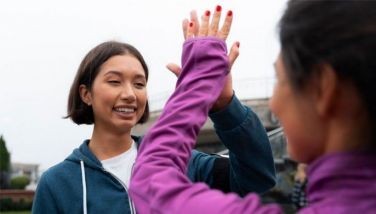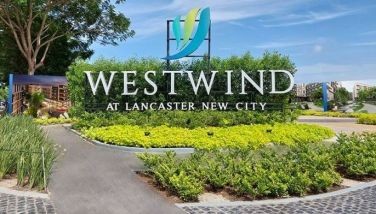A not-so-folksy Museum of American Folk Art
June 15, 2002 | 12:00am
 Time in New York has moved much faster since September 11. Though last autumn was one of the most difficult and dramatic in the history of New York and its people, it saw the opening of a truly unusual public building, a small museum right in the heart of the city.
Time in New York has moved much faster since September 11. Though last autumn was one of the most difficult and dramatic in the history of New York and its people, it saw the opening of a truly unusual public building, a small museum right in the heart of the city.
The Museum of American Folk Art is located on 53rd Street between Sixth and Fifth Avenues. I cannot help thinking all the time that the new museum, a whole new building designed by Tod Williams and Billie Tsien, is on the same block as the MoMA.
This part of town is the other epicenter of New York’s reborn interest in museums and the arts that exploded in the 1990s with the "positive" rivalry between the MoMA and the Guggenheim, new projects for the Museum of African Art and the ongoing reorganization of several other museums.
At a time when museums and their finances are growing exponentially, pressure is mounting worldwide for bigger and more spectacular architectural extravaganzas – the irresistible Bilbao effect. In daring opposition to that trend, the gemlike American Folk Art Museum manages to dazzle within a remarkably small space (only 300 square meters) and relatively low budget ($22 million, lunch money compared with Richard Meier’s $1-billion Getty Center). The slender, six-story structure adjoins the Museum of Modern Art, an ironic juxtaposition, given that Williams and Tsien were among the 10 firms considered for Museum of Modern Art’s current expansion, which was awarded instead to Japanese architect Yoshio Taniguchi.
The Museum provides an intriguing contrast to Taniguchi’s forthcoming complex. Whereas his sprawling design is grand, cool, serene, and elegantly minimalist – the perfect neutral container for high modernism – Williams and Tsien’s compact structure is intimate, warm, moody, and intriguingly gritty: ideal for the intuitive and often quirky works of self-taught artists and craftsmen.
I wonder how the expanded MoMA, when unveiled three years from now, will convert this block into midtown Manhattan’s cultural epicenter. Though the parallel efforts are apples and oranges conceptually, this combination will be a very tough act to follow, architecturally.
The Museum of American Folk Art provides a permanent home for the study and appreciation of a vital art that speaks eloquently of America’s cultural diversity, of its varied history and traditions. Artifacts – created out of materials by hand and, often, at critical moments in American history – testify to the personal creativity and communal effort that laid the foundations of American statehood.
It took courage for the museum to commission a bold work of contemporary architecture, rather than giving in to the more obvious temptation of displaying its holdings in a self-consciously quaint setting. By doing it this way, the institution honors its works of art much more than some sham Shaker meeting house would have. At the same time, these brave patrons and their adventurous architects have made a building that strikes a blow for modernity by freeing folk art from the folksiness that has plagued it for too long.
The small six-story building is a powerful and magnetic presence, thanks to a stunning facade and its ability to turn surprise at the unexpected into the curiosity that makes people want to go inside. The "wrinkled" surface imprisons light and reflects it in unpredictable chiaroscuro effects.
Together, Williams and Tsien found inspiration in the same forthright use of materials and invention of new forms that they discovered in the work of American master craftsmen. The exposed bush-hammered concrete structure of the museum is treated every bit as respectfully as the finely tapered wooden handrails and carefully thought-out flooring.
Long and thin – only 12.2 meters wide – the museum faces an open piazza so that it can be seen full-frontal from 52nd Street. The building is clad with panels of Tombasil (a form of white bronze) which is used for fire nozzles and ship propellers and has never been used architecturally. Panels are textured, their variations made deliberately by using steel or concrete moulds, and their fissures a natural consequence of the casting process.
Simultaneously archaic, monumental and fragile, this facade ushers visitors through a barely noticeable entrance into a world of natural light and warmth, and comfortingly domestic detail.
The museum extends upwards through floors stacked around a central wood and reinforced concrete staircase whose constant changes of level and section generate unexpected vistas of space and perspective. Niches and glass cases hanging the entire length of its vertical section offer a foretaste of the museum’s collection.
All natural light comes from this vertical cone and the windows facing the center of the block, while the split in the facade appears from the inside as rows of peepholes looking out into the city from small rest and transit areas pressed against the street facade.
American folk art embraces an enormous range of work, from the domesticity of quilts, weather vanes, flags, spatterware, and Shaker furniture, to the wilder shores of outsider art, a kind of naive surrealism. The four upper floors are devoted to galleries for permanent and temporary exhibitions.
Collections are elegantly displayed in straightforward manner in exhibition cases and in less traditional ways. Below the galleries are the ancillary facilities so essential to modern museums. At the mezzanine level, between the ground and the first floor, there’s a small coffee bar that looks out to 53rd Street and into the main ground hall and two-story atrium.
Underneath it, next to the reception area, is a museum shop. On the upper basement are an auditorium, lecture hall, lavatories and cloakroom; and below, a library, rare books room, audio-visual facilities, offices and plant rooms. In general, the west side of the building is lined by services such as a fire stair, lift and stairs.
The museum is capped by a skylight over a grand central staircase, washed in light, leading from second to third floor. Openings on each level allow natural luminance to filter into galleries and down to the lowest levels. Sectional changes subtly enlarge space, and progress through the building is enlivened by devices that allow you to see the same object from different angles, to see through a dividing wall from one gallery to another, to look from one level to another.
Objects mounted in niches throughout the building or on walls lining the light slots provide a continually changing landscape and recall the ways in which progress was often enriched in the old museums. The result is a museum that feels very much larger than it is.
The way they work together is like two trees. Above ground, they seem to be totally different from each other in terms of gender, race, temperament and energies. But below ground, their roots are intertwined. They may fight about things, but in the end, they know that at the deepest level they agree.
Though Williams and Tsien collaborate on every project, their specializations are clear. He is more interested in how a building is put together, devising structural gambits that transform engineering into art. She is much more concerned with the emotional aspects of how a space feels – those indefinable extras that raise mere construction to the level of high-style architecture. But their partnership is a great deal more than a stereotypical male-female division of labor.
BrandSpace Articles
<
>



















